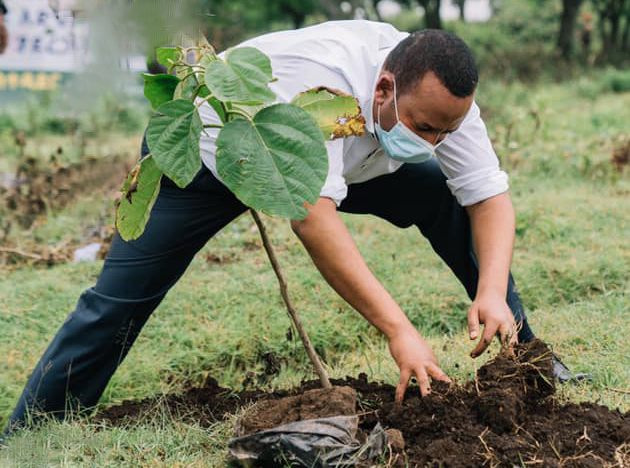
The ever-changing climate of the world has begun long ago. The change is yet to be seen as the cause of the global challenges and ozone deficits. One of the major causes of these problems is the increased emissions of greenhouse gases and the loss of forest resources.
The world-record events testify to the fact that glaciers are melting and cause risking floods; hurricanes and fire destroy life and property; land sliding, buildings collapsing, and the sun heat makes breathing hard.
Even though world leaders have reached an agreement on controlling CO2 emissions on the Doha Summit in Qatar; the earth’s temperature continues to rise. As a result, the earth will soon be dealing with heat that it cannot cope with. Studies also show that the earth’s water bodies increase in height.
Climate change and other natural disasters are seriously affecting the entire natural process of the earth. This means that if human beings adjust relationship with the earth, they can adjust the future: If not, the studies show that it can lead to serious problems. Those that are considered as a solution to the study include reducing what is burned for different services; planting many trees; conserving dense forests and encouraging carbon-dioxide-sucking innovations.
Emperor Hailesilassie led to the establishment of national parks in addition to protecting forests and planting trees. An example is the Awash National Park. During the Derg regime, environmental protection policies were formulated. Studies show, however, that their main focus has been on wildlife conservation. Particularly, the drought occurred in 1973-74 was among the issues that have led the regime to work hard on protecting the environment.
Prepared to undertake high level and coordinated work in the general forest, documents confirm that many works have been done to plant seedlings in naked areas by selecting the areas, nurturing seedlings, and providing small subsidies to the community. Forests that are seen on the mountains are planted in those days.
Studies have shown that providing fodder campaigns mainly to encourage people; for example, in places where relief was needed, plantation was undertaken by providing food aid. There are also those who offered their own experiences, saying: “We had planted trees receiving money as a payment to buy exercise books.”
During the time of Prime Minister Meles Zenawi, there was much work to be done to plant seedlings and take care of the environment, especially since climate change was the main focus. This was also the time when development and environmental institutions were established. At the policy level, it started with a goal setting in terms of ecology, the environment, and conservation of natural resources.
Dr. Abiy Ahmed, currently leading Ethiopia, is undergoing a nationwide seedling plantation program called “Green Legacy.” The campaign is unique by planning a large number of seedlings voluntarily than in the past times.
The countries’ experience and reality show that the opportunities available to developing countries, such as Ethiopia, are based on the benefits of natural resources. One of Ethiopia’s potential natural resources and development opportunities is forestry and forest preservation. Developing and planned utility have economic, ecological and social paramount importance, studies indicate.
According to the Central Statistical Agency, 83 percent of the population lives in rural areas. This means that the lives of many of the people are inextricably linked to agriculture. Thus, the integrated effort against this broader sector is likely to help make a significant difference to the country’s economy. As a result, the country is applying green development policy and strategy, recognizing the negative impacts of climate change on agricultural productivity. Ethiopia’s rapid growth and green development are complementary. A program that not based on environmental protection cannot be effective in any measure.
Countries that are registering economic growth, especially those growth based on natural resource, are causing great environmental degradation. A good example is that oil-producing countries play a major role in environmental pollution. Man loses the most important elements of his life through environmental pollution and waste. What makes this surprising is it is primarily performed by humans, while the other is by nature.
Waste is the inappropriate use of local natural resources whereas pollution is the destruction of physical and biological contents of an environment (soil, water, air, sound …). Pollution involves the harm on human, animals and other living things by polluting the natural or man-made resources.
The FDRE Constitution proclaims that government should strive to ensure that all Ethiopians have the right to live in safe, clean and healthy environment, that any economic development should not compromise environmental wellbeing.
Accordingly, Ethiopia’s effort to reduce poverty and ensure its lasting prosperity in terms of economic growth has to do with the proper handling, management and utilization of its natural resources. These resource potentials include: agriculture, construction and Promotion of renewable energy alternatives supply; and the basis of sustainable development with targeted social service provision and human resource development.
Ethiopia is committed to reducing greenhouse gas emissions, alternatively using solar-powered technologies, utilizing its natural resources properly, extending river basin development, applying its forestry strategy and proving its commitment on green development implementation.
One of the most important environmentalbased technologies using the Green Development Strategy is rehabilitation of damaged landscapes making free of animal and human contact. This, in turn, contributes to the recovery of degraded and nonproductive lands due to losing soil fertility.
The technology is feasible to apply to local landscapes to restore injured areas; choosing the right plant species for the climate of the environment and identifying ways to generate income can be considered as a way of community use.
As a result, extinct species of plants and animals are returning. Beyond the significant contribution of technology to the environment; it creates a link between input suppliers and the community. The economic benefits are reliable and therefore play an important role in the sustainability of the technology.
Planting indigenous trees is a great option for recovering damaged lands. To this end, many nursery stations need to be used. Indigenous seedlings are being developed in Ethiopia. The country’s forest cover has been greatly enhanced by developing seedlings and taking care of forests. This is part of the Greater Green Development Strategy. It is very important to continue to strengthen this practice.
Because the community can benefit from environmental conservation; currently, local residents and farmers and pastoralists have devoted their time to the conservation work. As a result of the catchment development activities in many parts of the country, many young men and women have been given additional job opportunities. In addition, as environmental evidence testifies, Ethiopia’s environmental activities benefit the community through the green development strategy.
Green development strategy is an important issue for the country to break free from poverty that has long been known for. Recognizing this, it should continue to strengthen its activities by introducing technologies that are relevant to the environmental protection and continuing natural development work firmly that has been started.
In advance thinking to benefit from natural resources by making the world so convenient for living through extending environmental protection activities should be timely action. To this end, countries of the world are working paying special attention to the matter. Ethiopia should also need to restore its forests and save its biodiversity by reducing pressures.
In this view, the Green Legacy, which has been started last year, taking place throughout the country, and being intensified in the current fiscal year, will benefit not only the country, but also the world. During the past summer, over 4 billion seedlings were planted across the country in rural and urban areas. Especially, plantation of over 350 million seedlings conducted on 28 July, 2019 under special arrangement was the world record and made Ethiopia a big issue of discussion globally.
With a special emphasis on not only planting, but also caring and nurturing, Prime Minister Dr. Abiy Ahmed has been exemplary. The Ministry of Agriculture recently announced that more than 84 percent of the seedlings planted last year are on good condition. As mentioned above, this work will benefit the whole world, and it will continue to be further strengthened.
In connection with this, Prime Minister Dr. Abay Ahmed announced that preparations are underway to plant more than five billion seedlings this budget year. This second national tree planting campaign is officially launched by the Prime Minister at Hawassa City on 6 June, 2020 planting trees with high ranking government officials at federal and regional levels.
Among the seedlings to be planted, special emphasis (80 percent) has been placed on fruit development: such as mango, apple, papaya and avocado. This has dual benefits for it protects the environment and climate change and ensures food security.
Thus, it is the responsibility of everyone to carry out the most important tasks in keeping the environment healthy by caring for the forests to keep the future generations safe beyond the current benefit.
The Ethiopian herald June 9,2020
BY BACHA ZEWDIE




